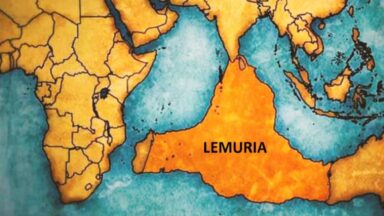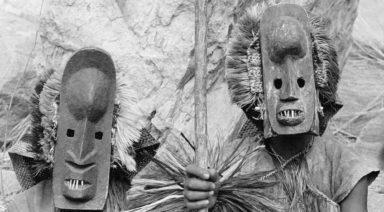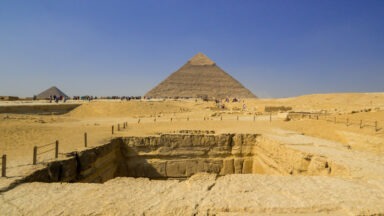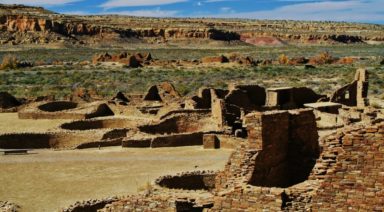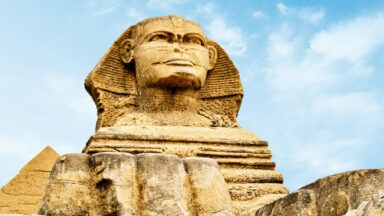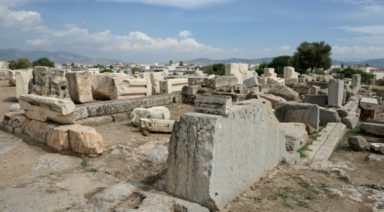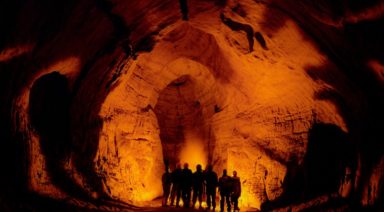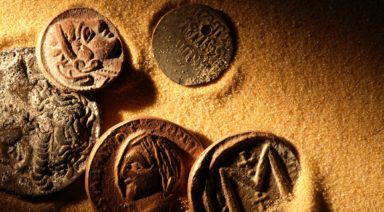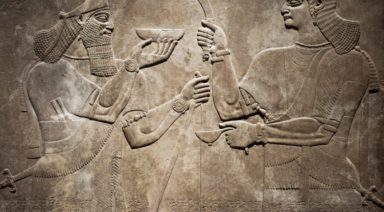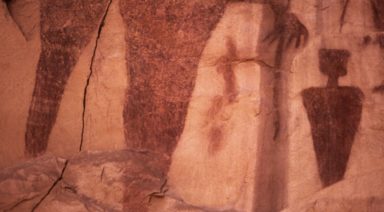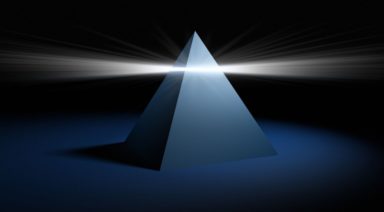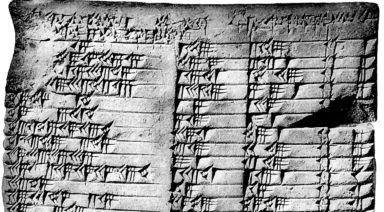Asteroid That Killed Dinosaurs; Would You Exist If It Hit Anywhere Else?

About 66 million years ago, an asteroid slammed into the Mexican Yucatan Peninsula at a speed of about 54,000 mph. Massive tsunamis, several-hundred-feet-tall, washed across North and South America wiping out almost all land-faring creatures. Fiery rock fragments rained from the sky, and the atmosphere filled with soot, blocking the Sun for weeks to come. But as it turns out, if this asteroid that killed the dinosaurs had hit the Earth as little as 30 seconds earlier or later, the event might not have been as cataclysmic, and the dinosaurs may not have gone extinct.
Where Did the Asteroid That Killed the Dinosaurs Land?
The Chicxulub crater on the tip of the Yucatan Peninsula in Mexico, is the site where the 9-mile-wide asteroid hit, wiping out the dinosaurs. Upon impact, it hit the Earth with a force 10 billion times that of the nuclear bomb dropped on Hiroshima during WWII. The earthquake created by this impact would have been 1000 times more intense than any earthquake ever recorded in modern history.
A large amount of heat was released when it struck, but in the weeks to come global temperatures dropped between 14-18 degrees Fahrenheit. On land however, temperatures dropped up to 29 degrees Fahrenheit, due to mass amounts of dust and gas that became trapped in the Earth’s atmosphere, blocking out the Sun and eventually killing off the rest of the dinosaurs.

There are two parallel theories about what actually caused this nuclear winter, but both agree that the rare site of impact was what lead to it. This area of sedimentary rock was either sulphur or oil-rich, and areas like these are only present on 13 percent of the Earth’s surface. This means that there was an incredibly narrow window for that asteroid to land where it did, with 87 percent of the Earth’s surface area available for an impact that would not have caused the mass extinction.
There is also plenty of evidence of other large asteroids striking Earth around that time which didn’t lead to a mass extinction, making the timing of this asteroid all the more extraordinary.
What If the Asteroid That Killed the Dinosaurs Missed?
We are bombarded by asteroids and meteors all the time; the most recent destructive instance was in Russia in 2013, in the form of a meteor from a 65-foot, near-earth asteroid. The Chelyabinsk meteor injured 1,500 people and led to tens of millions of dollars in damage, making it the largest and most destructive impact of the century – and it didn’t even hit the ground.
Meteors this size are rare and even larger ones, like the one that killed the dinosaurs, only come around every few million years. Individually, we have 1: 250,000 odds of dying from a meteor strike, and even then, the chance of a meteor hitting land is very slim with 71 percent of Earth’s surface being covered by water. But while most meteors burn up before hitting the Earth, atmospheric impacts can still be destructive.
So, what would have happened if the asteroid didn’t cause the dinosaur apocalypse? Would they still be around today? Would it have impeded our evolution as a species or would they still have gone extinct?

That question is debatable with some scientists believing these prehistoric creatures were already on a path to extinction. The cooling temperature of the Earth could have prevented some species from continuing on, while other species may have survived. Though, some scientists believe certain species of dinosaurs were adapting to the cooler temperatures by shrinking in size.
Was the Impact a Coincidence?
With the precise moment and location that the asteroid hit the Earth, in one of the worst imaginable spots, it could be interesting to entertain the theory that maybe the impact was intentional, if not just highly coincidental. This idea falls in line with the concept of directed panspermia, the theory of an advanced alien race that intentionally seeds a planet with the building blocks of life. Could a highly advanced species have recognized that our planet had the necessary environment to harbor life, but that the dinosaurs would have posed a major impediment to our evolution?
Or to take less of an extraterrestrial creationist position, is there a possibility that the asteroid came from a planet or solar system where life existed, carrying microorganisms to seed Earth? This type of theory is actually accommodated by more mainstream views. In fact, it has been proven that the asteroid strike catapulted rocks capable of containing lifeforms to the far reaches of our solar system, possibly landing on Mars and habitable moons of Jupiter. While this type of biological seeding between planets in a solar system is likely, intergalactic panspermia would be a bit more difficult.
There is ample evidence that shows large, meteoric impacts likely brought the building blocks of life to Earth, over 4 billion years ago. Bacteria, sugars and amino acids could have hitched rides on these space rocks, crash landed on Earth, and germinated the planet. If these planets, moons, or other celestial bodies contained frozen water, the impact could have melted the ice, creating a habitable environment for life to incubate.
Could the asteroid that killed the dinosaurs have fit somewhere between these two hypotheses? Or was it all merely coincidental?
The History of Lemuria: Discover the Lost Continent
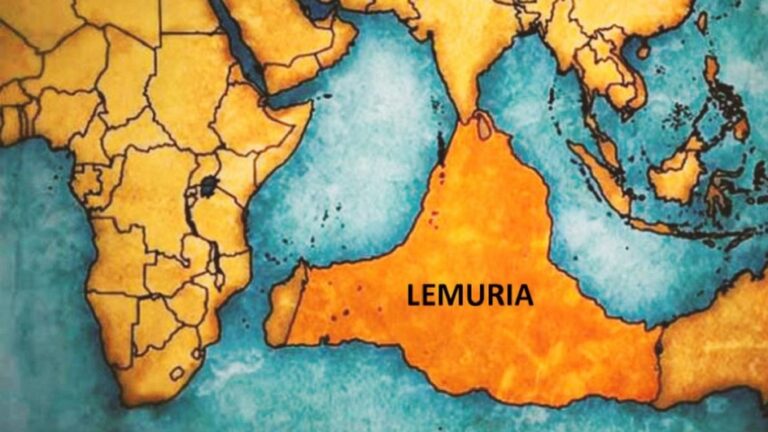
Lemuria was a vast continent that existed in the Pacific Ocean, inhabited by an advanced and spiritually developed civilization. It significantly influenced human evolution and left a legacy that endures to this day. In this article, we explore what Lemuria was, its origins, evolution, and impact on human history.
Table of Contents
- What Was Lemuria?
- Origins and Evolution of Lemuria
- Life in Lemuria
- Lemurian Technology and Knowledge
- The Relationship Between Lemuria and Atlantis
- The Fall of Lemuria
- The Legacy of Lemuria
What Was Lemuria?
Lemuria was a continent located in the Pacific Ocean, home to one of the earliest advanced civilizations on Earth. The Lemurians were highly spiritual beings who lived in perfect harmony with their surroundings. Their civilization was known for its profound knowledge of energy and its ability to manipulate it for the well-being and evolution of their society.
The Lemurian civilization thrived for thousands of years, developing advanced technologies that allowed them to build great cities and temples dedicated to meditation and spiritual connection. Lemuria was also a center of knowledge and wisdom, where various spiritual and scientific disciplines were taught and practiced. The Lemurians were known for their telepathic communication abilities and their capacity to access higher dimensions of existence, which enabled them to reach high levels of evolution and consciousness.
In the series Initiation, available on Gaia, Matías De Stéfano delves deeply into how this ancient civilization influenced human evolution and its connection with other advanced civilizations, such as Atlantis.
Origins and Evolution of Lemuria
The history of Lemuria begins approximately 200,000 years ago when the Alithir, an advanced race, arrived on Earth to raise the planet’s vibration and encode the water. These highly evolved beings chose the continent of Lemuria as their home, establishing a civilization that would become a beacon of light and knowledge for the world.
The evolution of Lemuria was marked by a deep respect for nature and an advanced understanding of cosmic energies. The Lemurians developed technologies that allowed them to harness the energy of natural elements, using resonance and vibration to create sustainable structures and systems. Their ability to work in harmony with nature enabled them to thrive for thousands of years, maintaining a perfect balance between technological development and spirituality.
As Lemuria grew and evolved, it became a center of cultural and spiritual exchange. The Lemurians established relationships with other advanced civilizations of the time, sharing knowledge and technologies that would benefit humanity as a whole. This intercontinental cooperation allowed Lemuria to expand its influence and leave a lasting legacy in Earth’s history.
Life in Lemuria
Life in Lemuria was deeply integrated with nature and cosmic energies. The Lemurians lived in harmony with their surroundings, practicing an advanced spirituality that permeated every aspect of their existence. Their society was based on cooperation, peace, and balance, creating a rich culture of spiritual knowledge and practices.
- Peaceful society: The Lemurian society was characterized by its focus on peace and cooperation. There were no wars or conflicts, as everyone worked together for the common good.
- Natural homes: Lemurian homes were built with natural materials and energetically aligned with the environment. These sustainable structures provided comfort and harmony with nature.
- Spiritual education: From an early age, Lemurians received an education focused on spiritual development and connection with the universe. This allowed them to grow with a deep understanding of their place in the cosmos.
- Telepathic communication: The Lemurians had telepathic abilities, facilitating effective and profound communication among themselves. This eliminated misunderstandings and promoted greater social unity.
- Holistic health: Medicine in Lemuria was holistic, combining spiritual and scientific knowledge. They used energy and medicinal plants to heal and maintain well-being.
- Community rituals: Ceremonies and rituals were an essential part of Lemurian life, strengthening social cohesion and connection with cosmic energies. These events included collective meditations and celebrations of natural cycles.
- Relationship with nature: Daily life was synchronized with natural cycles, respecting and honoring the Earth and all its beings. This respectful relationship ensured the sustainability and abundance of resources.
Lemurian Technology and Knowledge
The Lemurian civilization was known for its advanced technology and profound understanding of natural energies. The Lemurians developed various technologies that allowed them to live in harmony with nature and harness cosmic energies for their benefit.
- Crystal energy: The Lemurians used crystals to store and channel energy. These crystals were essential in their healing and communication technologies.
- Resonance technology: They used resonance and vibration for construction and healing. This technology allowed them to create structures and regenerate tissues using specific frequencies.
- Solar energy utilization: Solar technology was highly advanced in Lemuria. They used devices to capture and store solar energy, providing a sustainable energy source.
- Coded water systems: The Lemurians encoded water with specific energies for healing and growth. This knowledge improved the health and vitality of their crops and themselves.
- Light ships: They developed ships capable of traveling through dimensions using light and cosmic energy. These ships facilitated contact with other advanced civilizations.
- Sacred geometry knowledge: Sacred geometry was used in all their constructions and technologies. Geometric patterns ensured energetic alignment and resource efficiency.
- Planetary energy networks: They created a network of connected energy points that facilitated energy transfer and long-distance communication. This network maintained balance and harmony throughout Lemuria.
The Relationship Between Lemuria and Atlantis
Lemuria and Atlantis were two advanced civilizations that existed during different periods, though there was a time when they coexisted and maintained contact. Both civilizations shared knowledge and technologies, establishing a relationship of cultural and spiritual exchange. The Lemurians and Atlanteans collaborated on several projects, mutually benefiting from each other’s discoveries and advancements.
The relationship between Lemuria and Atlantis was based on cooperation and mutual respect. The Atlanteans, who emerged after the Lemurians, adopted many of the spiritual and technological practices developed in Lemuria. This exchange allowed both civilizations to reach high levels of evolution and consciousness, significantly influencing the progress of humanity.
However, as both civilizations grew, differences in their approaches and philosophies began to emerge. While the Lemurians focused more on spirituality and harmony with nature, the Atlanteans began to develop technologies aimed at control. These differences eventually led to tensions and conflicts that contributed to the fall of both civilizations.
The Fall of Lemuria
The fall of Lemuria was a cataclysmic event that marked the end of a golden age of wisdom and peace. According to various esoteric traditions, Lemuria was destroyed by a series of natural disasters, including earthquakes and volcanic eruptions, that submerged much of the continent into the Pacific Ocean. This event was seen as a necessary energetic rebalancing of the Earth.
Before their fall, the Lemurians knew their time was coming to an end. Many of them migrated to other parts of the world, carrying with them their knowledge and traditions. These survivors established new communities in regions such as Asia, the Americas, and Africa, where they influenced the development of local civilizations and planted the seeds of new spiritual cultures.
Despite the physical destruction of Lemuria, its legacy continued through the stories and teachings passed down by the survivors. These stories became the foundation of many mythologies and belief systems around the world, keeping the memory of Lemuria alive and preserving its contribution to the spiritual evolution of humanity.
The Legacy of Lemuria
The legacy of Lemuria is evident in various spiritual and cultural traditions around the world. The knowledge and practices of the Lemurians were integrated into the cultures of Asia, the Americas, and Africa, influencing their belief systems, ceremonies, and social structures. This legacy can be seen in the similarities between the mythologies and spiritual practices of these regions.
The Lemurian teachings on connecting with nature and utilizing cosmic energies have endured through the centuries. These teachings are reflected in practices such as meditation, the use of crystals for healing, and the application of sacred geometry principles in architecture. The influence of Lemuria is especially notable in indigenous wisdom and shamanic traditions.
Today, many seekers and spiritual communities continue to explore and honor the legacy of Lemuria. Through study and spiritual practices, they strive to revive ancient knowledge and apply it to the modern world. This renewed interest in Lemuria highlights the ongoing relevance of its wisdom in the quest for balance and harmony with nature and the cosmos.


